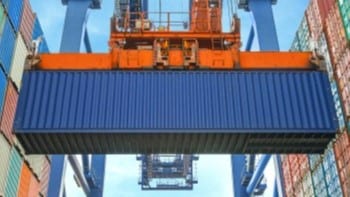Carriage Paid To (CPT)

.
What is Carriage Paid To (CPT)?
An Incoterms® rule, applicable to any form or forms of transport (air, ocean, ground, or multimodal), under which the seller clears the goods for export and arranges delivery to the carrier contracted by the seller at a designated destination. The seller assumes all risks until the goods are in the care of the carrier.
The seller is generally responsible for all costs associated with transporting the goods to the named place of destination, subject to the contract of carriage. Once the goods have arrived at the named place of destination, most costs transfer from the seller to the buyer.
It is important to note that the transfer of risk from seller to buyer occurs at a different point than the transfer of costs. Under CPT, two locations are important: the place where the goods are delivered (for transfer of risk), and the place of destination, to which the seller commits to contract for carriage.
The seller and buyer would do well to identify these two places as precisely as possible in their contract of sale. Identifying the place of delivery is especially important where several carriers are involved, each handling different legs of the transit from delivery to destination. If the parties don’t agree on a specific place of delivery, the default position is that risk transfers when the goods have been delivered to the first carrier at a point entirely of the seller’s choosing and over which the buyer has no control.
The seller and buyer are also advised to identify as precisely as possible in the contract of sale an exact point within the agreed place of destination, as this is the point to which the seller must contract and pay for carriage.
CPT is similar to the Incoterms® 2020 rule CFR, except that CFR only applies to goods shipped by sea, whereas the CPT rule can be used for any form or forms of transport, including land and air, as well as ocean.
This term should include in its citation the chosen destination, i.e. "CPT 123 ABC Street, Boston", meaning the seller pays freight charges to ABC Street in Boston.
Note:
When an Incoterms® rule is included in a contract of sale, it creates legal obligations for the buyer and seller, which can have costly implications. Therefore, it is important that traders read and understand the precise wording of the Incoterms® rules carefully and choose the rule to include in their sale contract thoughtfully. For additional information and resources on the Incoterms® rules, and to purchase the full text of the Incoterms® 2020 rules, visit the ICC website.
Related Terms
Carriage and Insurance Paid To (CIP) Consignee Consignor Cost and Freight (CFR) Incoterms
Related FAQs
Why are Incoterms rules necessary?
How many Incoterms rules are there?
What do Incoterms rules cover?
What don't Incoterms rules cover?
What can I do right now to help my business with Incoterms rules?
How do Incoterms rules affect my shipment?
Related Content
-

Incoterms
Learn more about the eleven existing Incoterms® rules and what they mean for your shipping business.
Learn More
-

Freight Services
Whether you’re a seasoned supply chain expert or this is your first time just starting out, we’re here to help.
Learn More
-

Ocean Freight
Every day we move ocean freight across 2,300+ lanes. So if you're nervous about going ocean, don't sweat it.
Learn More


